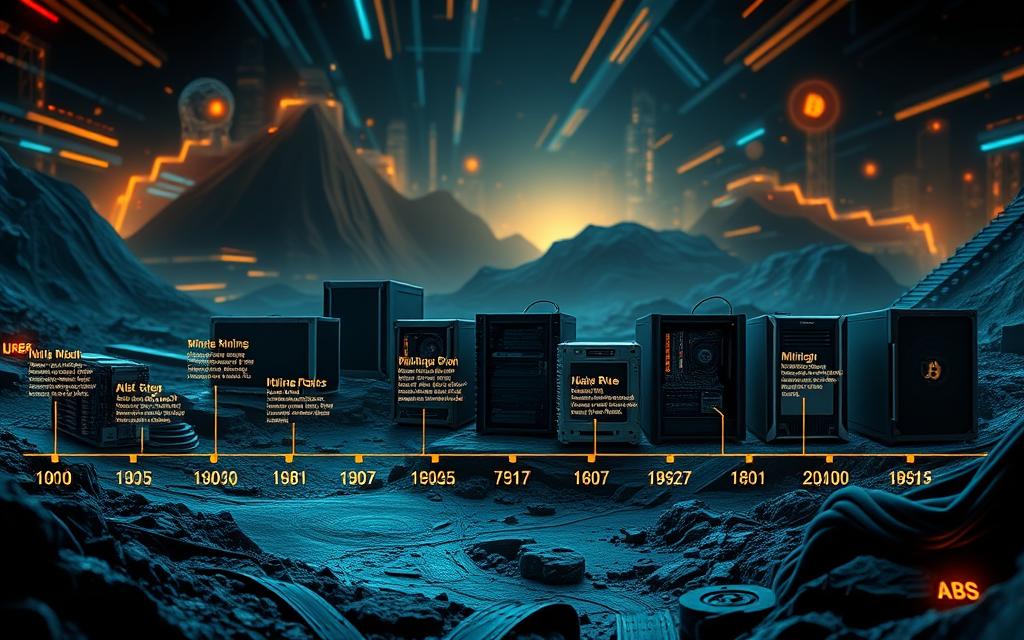Table of Contents
The total supply of Bitcoin is capped at 21 million BTC, a fundamental feature hardcoded into its protocol. As of May 2025, approximately 19.6 million Bitcoin have been mined, accounting for about 93.3% of the total supply. This leaves roughly 1.4 million BTC yet to be created through the mining process.
Understanding the Bitcoin supply mechanics is crucial for investors and enthusiasts alike. The capped supply creates digital scarcity, similar to precious metals, and is a key factor in Bitcoin’s long-term value proposition. For those interested in cryptocurrency economics, grasping the significance of Bitcoin’s total supply and its circulation is essential. To learn more about the implications of lost cryptocurrencies on the overall supply, you can visit this resource for additional information.
The controlled issuance schedule of Bitcoin differs significantly from traditional currencies, making its supply cap a unique feature. As the remaining 1.4 million BTC are mined, the total supply will gradually approach its maximum limit.
Understanding Bitcoin’s Supply Mechanism
At the heart of Bitcoin’s decentralized network lies a carefully crafted supply mechanism. This mechanism is designed to ensure the scarcity and security of the asset, making it an attractive store of value.
The 21 Million Bitcoin Cap
The Bitcoin protocol is programmed to limit the total supply of BTC to 21 million. This cap was established by Satoshi Nakamoto to create a deflationary asset, similar to precious metals, thereby controlling inflation. The protocol enforces this cap through its code, ensuring that the supply remains predictable and capped.
How New Bitcoins Are Created Through Mining
New Bitcoins are created through a process known as mining. Miners validate transactions and solve complex cryptographic puzzles to add new blocks to the blockchain. As a reward for their efforts, miners receive newly minted Bitcoins, known as the block reward. This process, called proof-of-work, is the cornerstone of Bitcoin’s security infrastructure.
| Aspect | Description |
|---|---|
| Supply Cap | 21 million BTC |
| New Bitcoin Creation | Through mining process |
| Mining Reward | Block reward for miners |
How Much Bitcoin is Left to Mine
With nearly 19.5 million Bitcoins already in circulation, the question arises: how much is left to mine? The total supply of Bitcoin is capped at 21 million, meaning there are approximately 1.5 million Bitcoins left to be mined.
Current Circulation vs. Total Supply
Currently, there are around 19.5 million Bitcoins in circulation out of a total supply of 21 million. This means that about 92.8% of all Bitcoins have already been mined, leaving a remaining supply of roughly 1.5 million. You can check the latest statistics on Bitcoin circulation.
| Total Supply | Current Circulation | Remaining Supply |
|---|---|---|
| 21 million | 19.5 million | 1.5 million |
Timeline for Mining the Remaining Supply
The remaining 1.5 million Bitcoins are expected to be mined over the next century. According to current estimates, 99% of all Bitcoin will have been mined by 2035. However, the final fraction — the last satoshis — won’t be produced until around 2140 due to the nature of geometric reward reduction.

The Last Bitcoin: When Will It Be Mined?
The last Bitcoin is expected to be mined around 2140. This prolonged timeline is due to the halving mechanism, which slows down the rate of new Bitcoin creation over time. As we approach the supply cap, the mining process will transition from block rewards to transaction fees as the primary incentive for miners.
Bitcoin Halving Events and Supply Reduction
A key aspect of Bitcoin’s design is the halving of block rewards, which occurs approximately every four years. This mechanism is crucial for controlling the supply of new Bitcoins entering the market.
What Is a Bitcoin Halving?
A Bitcoin halving is an event where the reward for mining new blocks is reduced by half. This occurs every 210,000 blocks, or roughly every four years, and is designed to slow down the issuance rate of new Bitcoins in a predictable manner.
Historical Halving Events and Their Impact
Historically, Bitcoin halving events have had significant impacts on the cryptocurrency’s market dynamics. The first halving in 2012 reduced the block reward from 50 to 25 Bitcoins. Subsequent halvings in 2016 and 2020 further reduced the reward to 12.5 and then 6.25 Bitcoins, respectively. These events have influenced Bitcoin’s price and mining profitability.
Future Halvings and Their Effect on Supply
The next halving event is scheduled for 2024, which will reduce the block reward to 3.125 Bitcoins. Future halvings will continue to reduce the issuance rate until all 21 million Bitcoins are mined. The halving schedule creates a predictable supply curve, potentially supporting Bitcoin’s long-term value proposition by making it increasingly scarce over time.
The Reality of Bitcoin’s Circulating Supply
Estimates suggest that a substantial number of Bitcoins are permanently lost, impacting the overall supply dynamics. The total supply of Bitcoin is capped at 21 million, but the actual number in circulation is lower due to various factors.
Lost Bitcoins: The Permanently Inaccessible Supply
A significant number of Bitcoins are lost due to forgotten private keys, destroyed storage devices, and the death of owners without proper succession planning. Firms like Chainalysis and Glassnode estimate that between 3.0 million and 3.8 million BTC are likely gone forever. This includes high-profile dormant addresses, such as the one believed to belong to Satoshi Nakamoto, holding over 1.1 million BTC.

How Lost Coins Increase Bitcoin’s Scarcity
Lost Bitcoins effectively reduce the circulating supply, making it closer to 16 million-17 million rather than the theoretical 21 million cap. As a result, the scarcity of Bitcoin increases over time, potentially enhancing its value proposition as a deflationary asset. The table below illustrates the impact of lost Bitcoins on the circulating supply.
| Total Supply | Lost BTC (Estimated) | Circulating Supply |
|---|---|---|
| 21 million | 3-3.8 million | 17-18 million |
The permanent loss of Bitcoins has significant economic implications. As the number of lost coins increases, the overall supply decreases, potentially driving up the value of the remaining coins. This dynamic underscores the importance of understanding the true circulating supply of Bitcoin.
Conclusion: The Future of Bitcoin’s Limited Supply
As we approach the 21 million Bitcoin cap, the cryptocurrency’s ecosystem is poised for significant changes. The limited supply of Bitcoin is a fundamental aspect of its design, influencing its value and security over time.
When the last Bitcoin is mined around 2140, the network will transition from block rewards to transaction fees as the primary incentive for miners. This shift is crucial for maintaining network security and validating transactions. The mining process will continue to be governed by a self-correcting feedback loop, where a decrease in miners leads to a difficulty adjustment, ensuring the network remains secure.
Every 2,016 blocks (roughly every two weeks), the network recalibrates mining difficulty using a parameter known as nBits. This mechanism keeps block times steady at around 10 minutes, regardless of the number of miners competing. As block rewards diminish, transaction fees will become increasingly important for miners to cover their expenses.
The fixed supply of Bitcoin has significant implications when compared to traditional fiat currencies. Bitcoin’s scarcity could make it a hedge against inflation, potentially increasing its value over time. As the supply becomes increasingly scarce while demand potentially grows, the future value proposition of Bitcoin will be shaped by its limited supply and the security of its network.
FAQ
What is the total supply of Bitcoin?
The total supply of Bitcoin is capped at 21 million coins, making it a scarce digital asset.
How are new Bitcoins created?
New Bitcoins are created through a process called mining, where powerful computers solve complex mathematical problems to validate transactions and add them to the blockchain.
What is a Bitcoin halving event?
A Bitcoin halving event occurs every four years, reducing the block reward by half, which slows down the rate at which new Bitcoins are released into circulation.
How does the halving event affect the supply of Bitcoin?
The halving event reduces the supply of new Bitcoins, increasing the scarcity of the asset and potentially driving up its value due to decreased supply and steady or increasing demand.
What happens to lost or inaccessible Bitcoins?
Lost or inaccessible Bitcoins are permanently removed from circulation, further reducing the available supply and increasing the scarcity of the remaining coins.
When will the last Bitcoin be mined?
The last Bitcoin is expected to be mined around the year 2140, based on the current block reward schedule and the total supply cap of 21 million coins.
How do transaction fees work after the block reward is depleted?
After the block reward is depleted, transaction fees will become the primary incentive for miners to continue validating transactions and securing the network.
What is the current block reward for mining a new block?
The current block reward is 6.25 BTC per block, which is halved every four years, or every 210,000 blocks, as part of the Bitcoin protocol’s design.









